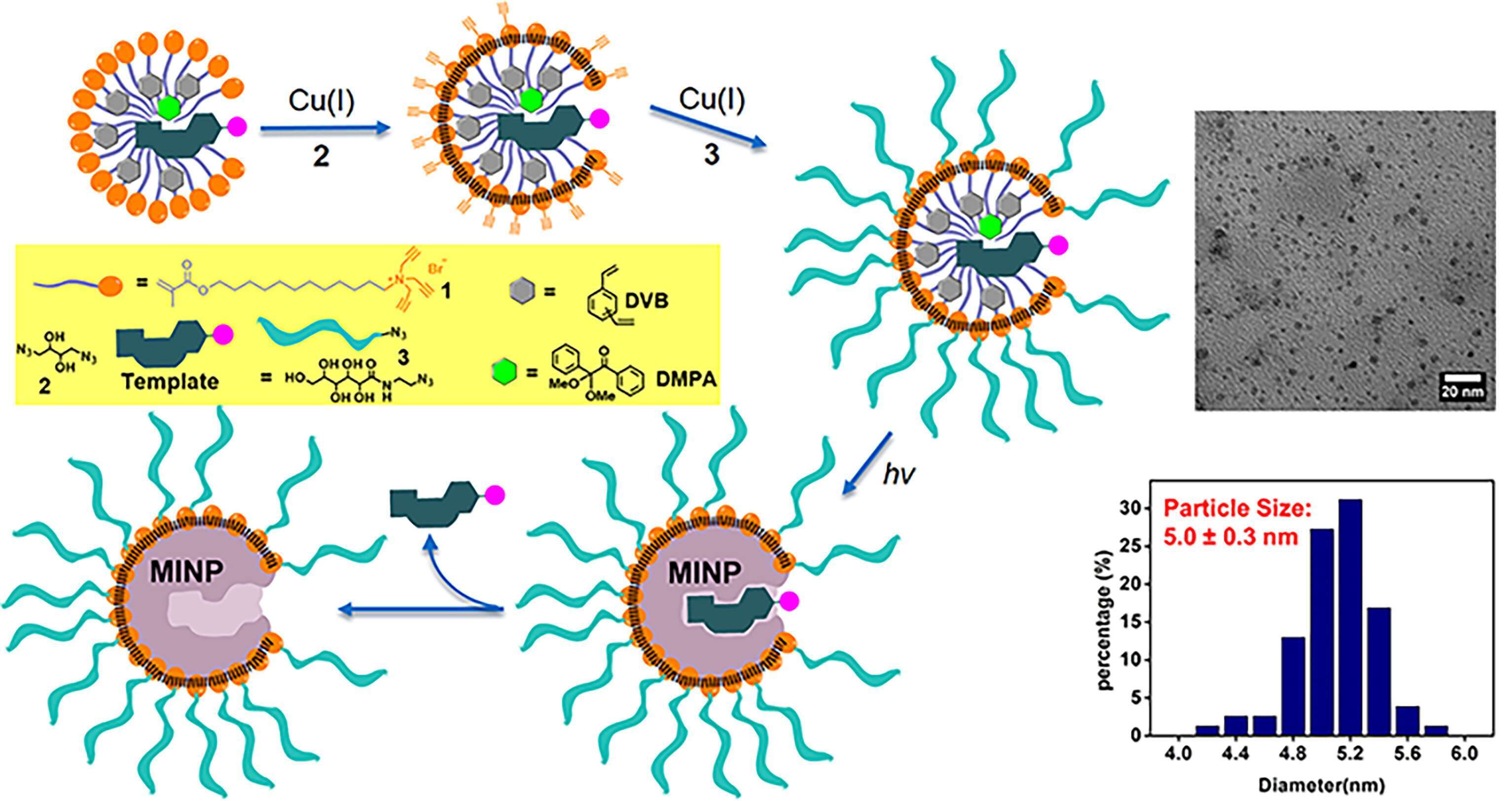
MOLECULARLY IMPRINTED CROSS-LINKED MICELLES FOR SELECTIVE BINDING OF BIOMOLECULES AND BIOMIMETIC CATALYSIS
Creation of synthetic receptors to bind biologically important molecules in water with high affinity and specificity is challenging, but can be achieved through molecular imprinting within cross-linkable surfactant micelles (Scheme 1). The so-called molecularly imprinted nanoparticles (MINPs) can be prepared in a one-pot reaction and purified within 2 days. They are characterized by the discrete binding sites and great resemblance to protein receptors in their nanodimension, water-solubility, a functionalizable exterior, and easily accessible, tailor-made hydrophobic binding pockets. MINPs could be made to recognize peptides by their amino acid sequence, side chains, and chain length. They distinguish monosaccharides by their number and orientation of hydroxyls and oligosaccharides by their sugar building blocks, α/β glycosidic linkage, and chain length. When installed with catalytic functionalities in the active sites, they could perform highly selective chemical transformations as synthetic enzymes.
References
[1] Awino J K, Zhao, Y (2013) Protein-Mimetic, Molecularly Imprinted Nanoparticles for Selective Binding of Bile Salt Derivatives in Water. J. Am. Chem. Soc. 135: 12552–12555.
[2] Awino J K, Zhao, Y (2016) Selective Recognition of D-Aldohexoses in Water by Boronic Acid-Functionalized, Molecularly Imprinted Cross-Linked Micelles. J. Am. Chem. Soc. 138: 9759–9762.
[3] Gunasekara RW, Zhao Y. (2017) A General Method for Selective Recognition of Monosaccharides and Oligosaccharides in Water. J. Am. Chem. Soc. 139: 829–835.
[4] Awino JK, Gunasekara RW, Zhao Y. (2017) Sequence-Selective Binding of Oligopeptides in Water through Hydrophobic Coding. J. Am. Chem. Soc. 139: 2188–2191.
[5] Fa S, Zhao Y. (2017) Peptide-Binding Nanoparticle Materials with Tailored Recognition Sites for Basic Peptides. Chem. Mater. 29: 9284–9291.
[6] Fa S, Zhao Y. (2018) Water-Soluble Nanoparticle Receptors Supramolecularly Coded for Acidic Peptides. Chem. -Eur. J. 24: 150–158.


Powered by Eventact EMS